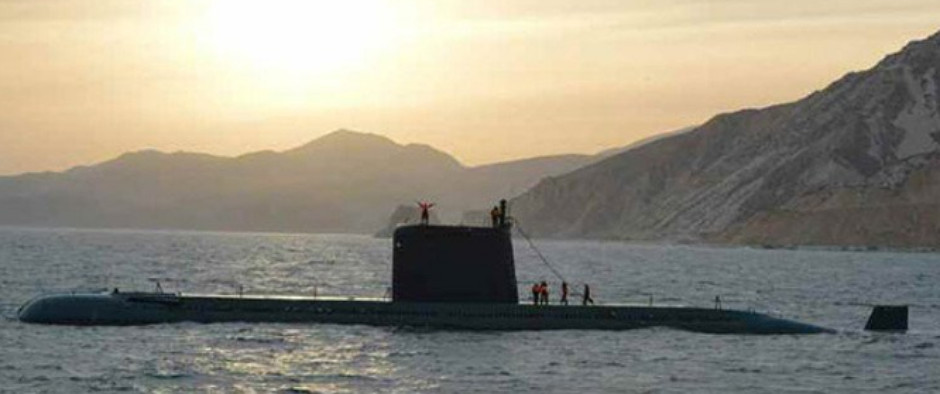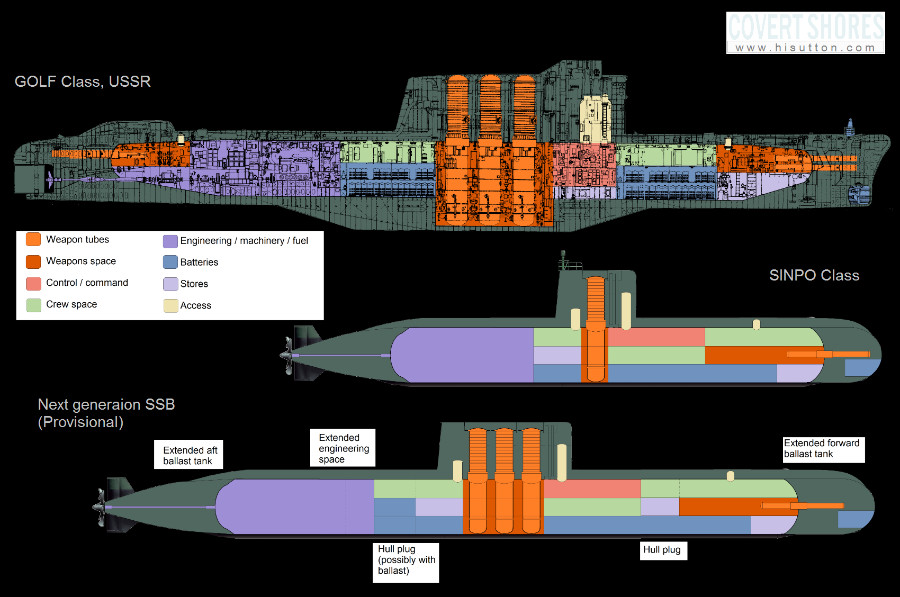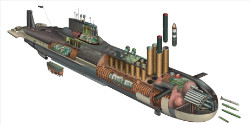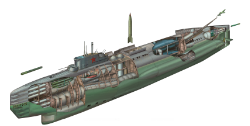 Thank you to unnamed advisers. This work would not have been possible without substantial inputs from experts. Any errors or incorrect assumptions are purely the responsibility of the author
Thank you to unnamed advisers. This work would not have been possible without substantial inputs from experts. Any errors or incorrect assumptions are purely the responsibility of the author
Making predictions is a fool’s business. Naval developments are constantly evolving and one year’s hot topic is the next year’s forgotten fad. Not to mention that naval architects are forever coming up with ingenious and unpredictable ways to achieve the same aim. North Korea’s recent successful submarine launched ballistic missile test and fifth nuclear test raise the question of how they will operationalize their submarine based capability. It is a question which has cropped up in a few places and is very interesting, so like a fool, here is my prediction.
Despite the strong rhetoric and threats of preemptive nuclear annihilation against Seoul, North Korea’s nuclear weapons act as a deterrent. Carrying out a pre-emptive nuclear strike would be suicidal from the Hermit Kingdom’s viewpoint. (That is unless US politics shifts towards withdrawing support for its allies in the region). Therefore the nuclear weapons' purpose is to protect the regime from invasion, which seems to be a serious preoccupation north of the 38th parallel. They are essentially a retaliatory tool, often descried as a Second Strike capability. Although in this case the trigger might be a conventional invasion as well as a nuclear attack. Submarines are relatively safe from nuclear first strikes and are generally survivable in conventional warfare if they keep quiet, so they are ideal Second Strike platforms. Additionally for the regime they earn bragging rights on the intenational stage, and for the Navy top brass also.
Having a Second Strike capability changes the strategic landscape entirely. North Korea has a history of provoking ‘incidents’ with the South. In the recent past the South has been increasingly willing to counter North Korean actions with military force. This is in part reinforced by the knowledge that the South now enjoys a solid technological and equipment advantage over the North. The North has a few trump cards up its sleeves, like the fact that the Southern capitol is within short range ballistic missile reach of the North, and that they have chemical weapons. But that hasn't deterred the South from firing back. However, having a viable submarine based nuclear capability will greatly inhibit the South’s options. Therefore the North might become emboldened and we could see more incidents.
The single SINPO Class (aka Gorae Class) boat is a test bed. It is about 68m (220ft) long, 6.5m (21ft) across and displaces an estimated 1,650 tons submerged. By ballistic missile submarine standards that is tiny. Consequently it can only carry a single launch tube for North Korea’s NK-11 “북극성-1” (Pukgeukseong-1) missile.


Original artwork - CLICK for HIGH-RESOLUTION image.
It is generally agreed that this is too few missiles for an operational boat because it is insufficient to guarantee that at least one (or a minimum number determined by North Korean decision makers) missile gets through to its target.
Prediction 1: An operational boat will have three or four missile tubes
The missiles will be NK-11s exactly per the SINPO, and they will likely be carried in the sail in the same way. Placing three missile tubes in the sail will match the Cold War GOLF Class, one of which was supplied to North Korea as scrap and almost certainly influenced the SINPO design.
Prediction 2: It will not be based on the Soviet GOLF Class
Rumors that the SINPO Class is in some way based on the1950s era Soviet GOLF Class SSB is pure nonsense, except in the limited regard to the missile tube arrangement and maybe some internal systems. But the SINPO Class follows a completely different design lineage, one which is genuinely North Korean. Like the MS-29 Yono Class midget submarine and SANG-O Class small submarine, the SINPO Class uses single hull construction (vs double hull construction on the GOLF and most Soviet submarines). So it is very unlikely that North Korea will dust of a sixty year old design and use it as their new type. GOLF class:

Prediction 3: Longer, not wider
The main limitation in submarine building is the dimeter of the pressure hull. The SINPO Class has a hull diameter of about 6.5m (21ft). Interestingly that is similar to the inner pressure hull of the GOLF Class. Building a larger diameter boat would require larger and therefore more expensive tools than were required to build the SINPO. And I suspect that the SINPO was built as large as she could be. Therefore the cheapest route for North Korean designers is to make the submarine longer to carry more missiles, but not wider.
Prediction 4: Endurance
The current SINPO Class is very small for a ballistic missile submarine and is unlikely to carry enough stores and fuel for operational patrols. The follow-on design will need to carry more stores, and probably more crew. The SINPO has around 70 crew members, compared to the GOLF’s 80-83. Living conditions on a North Korean submarine can be very basic, for example with crew eating in their bunk space rather than a dedicated mess, but they will still need some crew space to maintain operational readiness. Additionally they could remove or reduce the torpedo room, but this would be a risky decision. I suspect that both the SINPO and follow-on class will have a torpedo room, even if the number of torpedo tunes and reloads is modest compared to an equivalent sized attack submarine.
The boats are likely to remain in the Sea of Japan where they can easily reach South Korea and Japan. The month+ patrol endurance will allow them to threaten Gaum, Hawaii and even Australia. These boats will not be particularly stealthy in open water however (not high tech, no AIP, snorkeling frequently, limited depth etc) so trailing them should be achievable. Maybe South Korea and Japan will go in the direction of nuclear powered submarines. And maybe even Australia part-way through the Shortfin Barracuda order.
Bringing it all together:
CLICK for HIGH-RESOLUTION image. 
Note that the missile tubes on the GOLF are larger because they were originally designed to carry the longer R-11FM (SS-N-1 SCUD-A) missile. It had to be hoisted out of the missile tube for launch while the submarine was on the surface, which also required a lifting device under the missile. The SINPO Class’ NK-11 missile is based on the shorter Russian R-27 (SS-N-6 SERB) missile which was used on later GOLFs. The R-27 was liquid fueled, as was the first North Korean submerged test launch, but later launches of the NK-11 appear to be solid fueled. This will make the missiles heavier, but the dimensions appear to remain the same. GOLF launching R-11 for reference:

Corrections welcome.
Learn EVERYTHING about Special Forces subsCovert Shores 2nd Edition. A world history of naval Special Forces, their missions and their specialist vehicles. SEALs, SBS, COMSUBIN, Sh-13, Spetsnaz, Kampfschwimmers, Commando Hubert, 4RR and many more.
Check it out on Amazon
Related articles

 North Korean SSBN program - Sinpo Class
North Korean SSBN program - Sinpo Class

 Russian Typhoon Class SSBN
Russian Typhoon Class SSBN




 +
+ 


 Nuclear Missile submarines
Nuclear Missile submarines

 Iranian Nahang Class midget sub
Iranian Nahang Class midget sub

 infographic of North Korean MS-29 YONO Class midget sub
infographic of North Korean MS-29 YONO Class midget sub

 P.09851 KHABAROVSK and KANYON (Status-6)
P.09851 KHABAROVSK and KANYON (Status-6)

 Stalin's Super Sub, Project P-2
Stalin's Super Sub, Project P-2

 INS Arihant, Indian SSBN and .2
INS Arihant, Indian SSBN and .2

 Iranian Fateh Class SSK
Iranian Fateh Class SSK

 HDS-500 Midget Submarine
HDS-500 Midget Submarine


